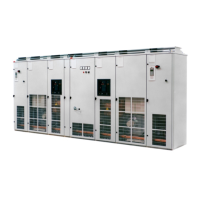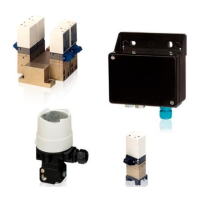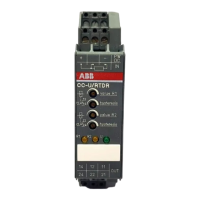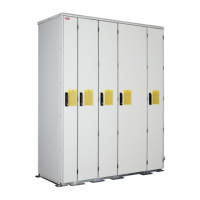II F 3-4
3ADW000072R0501_DCS600_System_description_e_e
3.4 Speed Control
The speed controller is located in the AMC board
software.
Speed reference
The source of the reference is depending on the oper-
ating mode.
Overriding control
system, fieldbus adapters ➔ remote mode, DDCS
via AMC board
DriveWindow ➔ local mode, DDCS via
AMC board
Panel CDP312 ➔ local mode, connector
on CON-2
Analogue inputs ➔ local I/O
Speed reference features
• Speed reference limiter
• Additional speed ramp for emergency stop
• Variable slope rate
• Speed correction
• Reference for inching before the ramp
• 2 different references for inching behind the ramp
Speed measurement
The actual speed may be calculated from:
• Armature voltage
• Analogue tachometer
• Pulse encoder
Controller features
• PID controller
• 2 first order low pass filters
• Window control
• Acceleration compensation
• Speed and torque adaptation
• Droop
• Additional torque references
• Torque limitation and gear backlash function (the
integral part of the controller is set to a suitable value
on limitation)
• Oscillation damping (band rejection filter for speed
error)
The diagram Fig. 3.8/2 shows the functionality of the
speed reference chain as well as of the speed controller.
3.5 Torque Control
Flux and Torque Calculation
The torque control is in general an open loop control.
The flux is adjusted by the field current. The reference
of the field current is generated by the superimposed
armature voltage control.
The torque is adjusted by the armature current. The
conversion from torque to current reference is done by
means of the calculated flux (based on the field current
and saturation characteristic).
Torque reference features
• Torque reference A with 1st order filter and load
share
• Torque reference B with torque ramp
• Torque reference limiter
• Torque correction and torque step
• Torque correction by means of analogue input 1
A good behaviour in the field weakening requires speed
measurement by tachometer or encoder.
A simplified scheme of the torque reference chain is
given in diagram fig. 3.8/2.
3.6 HMI (Human Machine Interface)
The HMI is performed by CDP 312 control panel
or by DriveWindow.
Both tools contain:
• Display of drive signals
• Setting of drive parameters
• Display fault and alarm messages
• Control the drive in local operation

